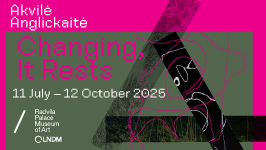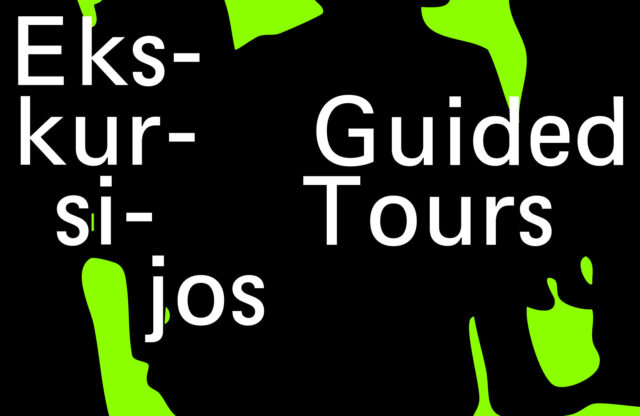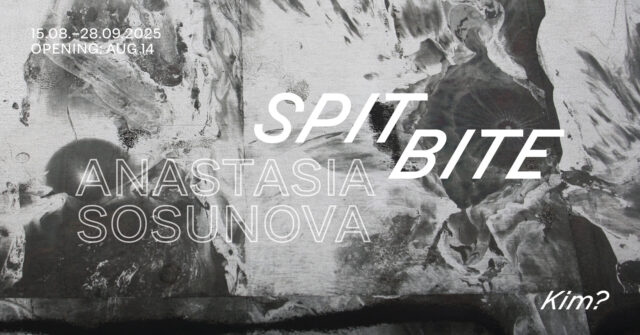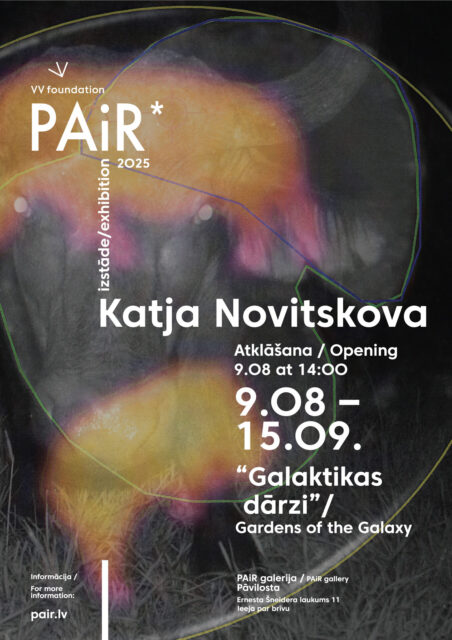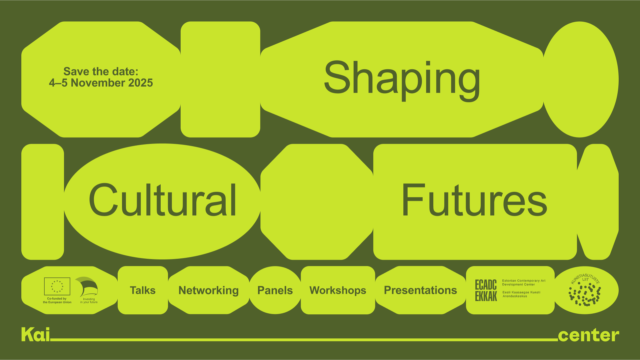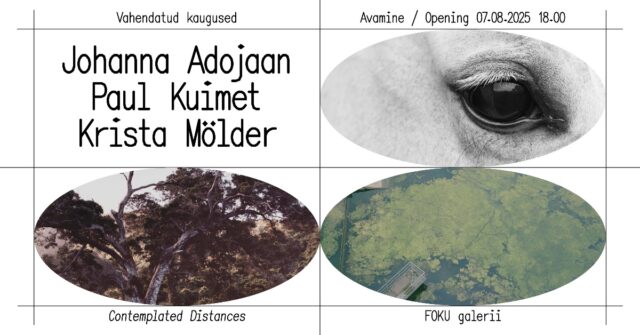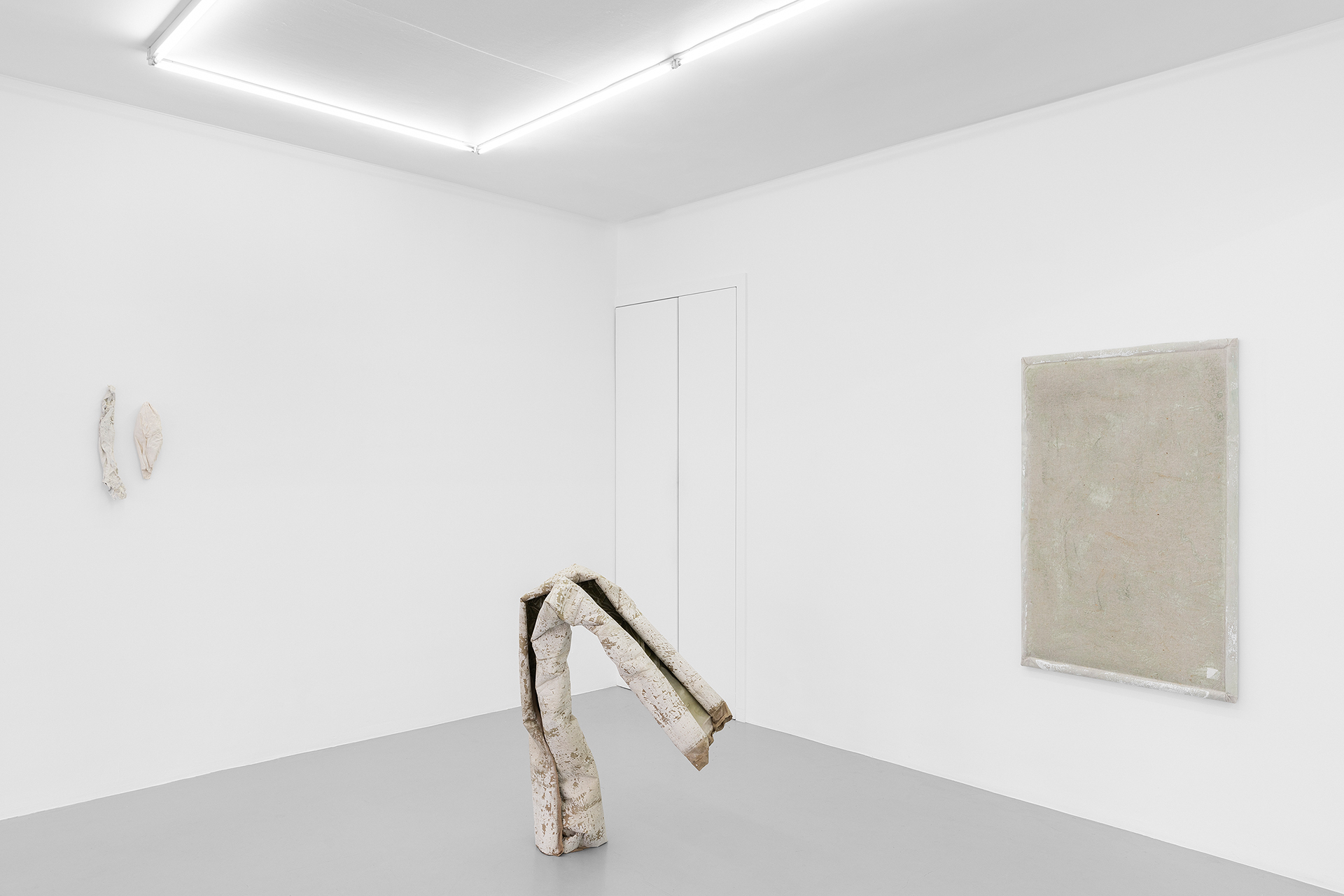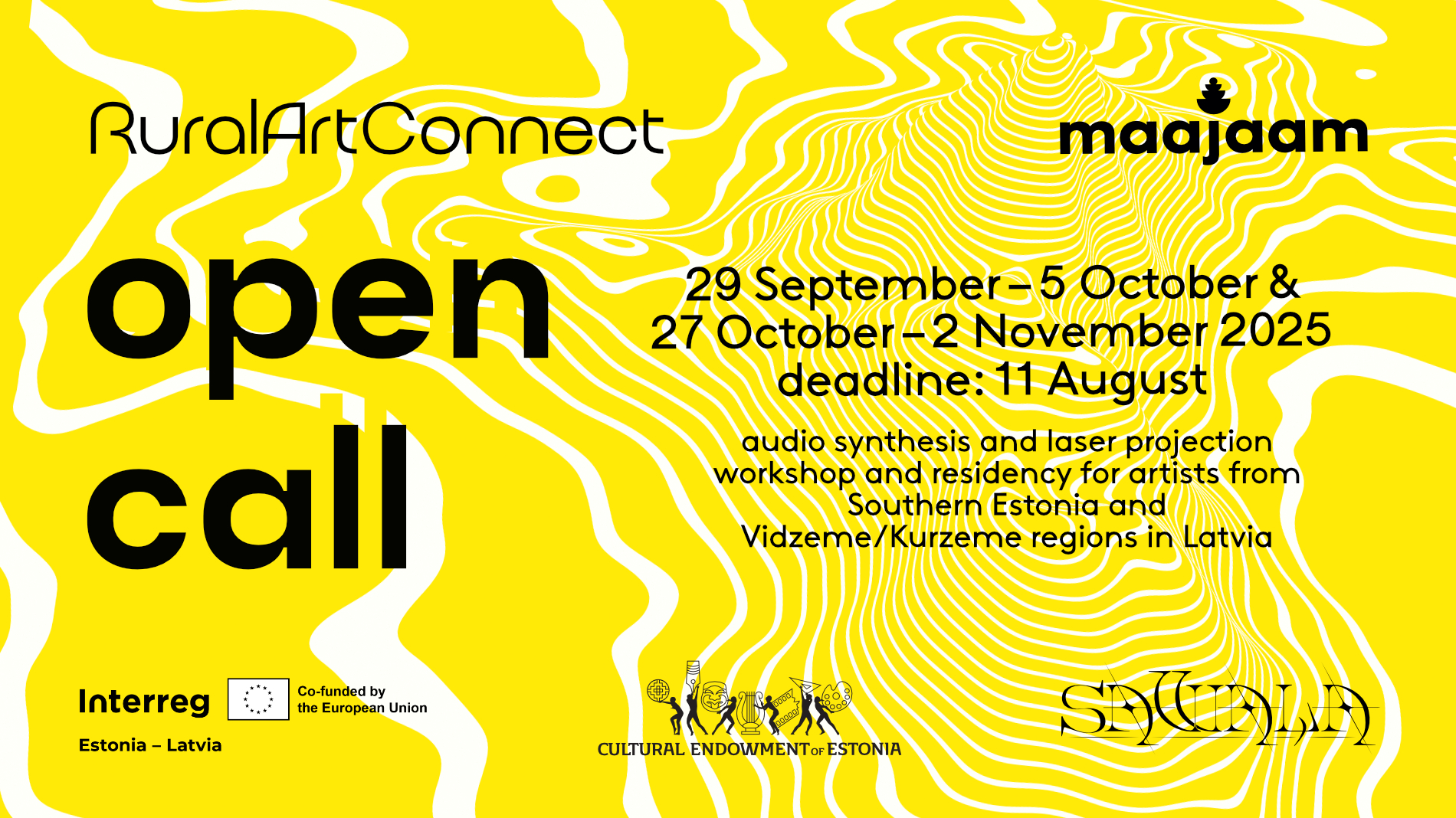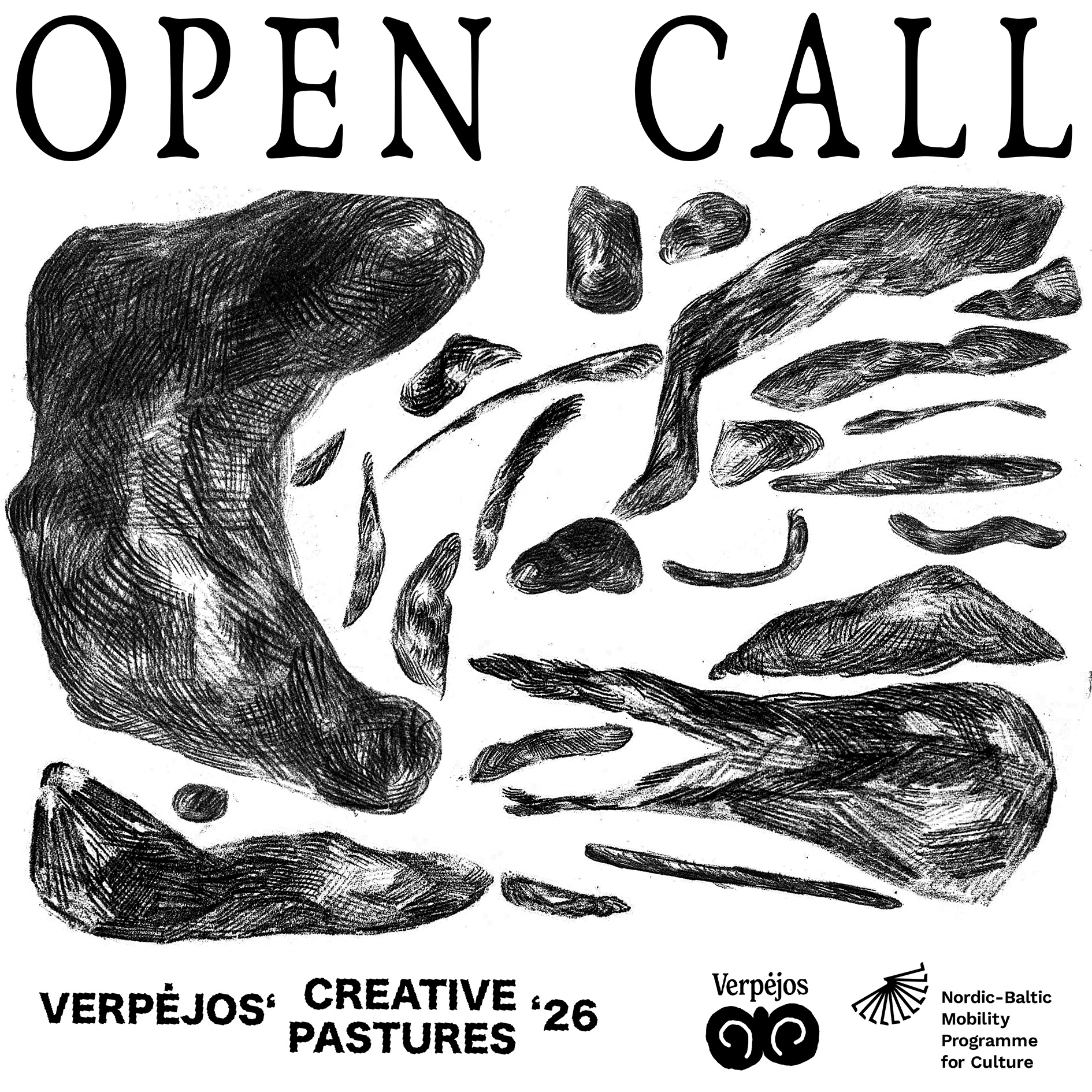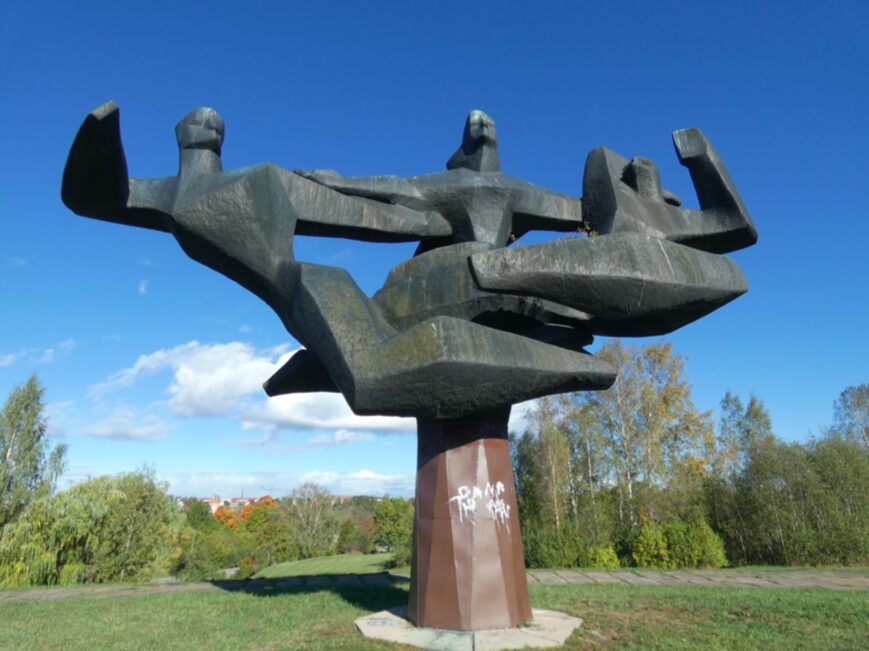The Estonian visual artist Liina Siib has been active on the art scene for more than 20 years. She has had around 40 solo exhibitions and many group exhibitions at home and abroad. The artist works with different visual art media, such as photography, video, sound, collage and installation, where she combines images, words, sounds, news articles, and sometimes comics, to experiment with tragi-comic ideas. Liina covers a range of categorical ideas and thoughts, but visualises them in a very mundane way. For instance, her video art film Averse Body (2007) draws feelings of bodies from different sex workers in the form of conversation, like ‘what part of your body do the clients like best?’, or the photographic work Revenge Location (2010), which uses words from a newspaper to indicate a crime scene: ‘A man killed his ex-lover and himself’, says a categorical violence. Her video art films A Street (2002), Coffee Machine (2016) and The Corridor (2016) also tell stories like an ethnographer. She works as a professor of Graphic Art at the Estonian Academy of Arts, and was resided at the Narva Art Residency during the interview. This interview was conducted at NART in Narva and Rävala 8 in Tallinn, where she had an exhibition during the pandemic.
Shameema Binte Rahman: I would like to start with your latest exhibitions: Huldufólk/Hidden People (solo January-February 2020), just before the Covid outbreak, The Meaning of Plus (sound installation, September-October 2021) and Linda Vilde Museum (January-March 2021) – during the pandemic period. While we all were getting used to the new norms of lockdown life, you were active with exhibitions on-site. Could you please give us an overview of these exhibitions?
Liina Siib: Actually, I thought I had done nothing during the Covid pandemic, it felt to me like a completely empty time; now it seems that it was not so empty … ha ha ha …
Huldufólk / Hidden People was exhibited in Tallinn from mid-January to early February 2020 while there were first cases of Covid in the world. It was an installation of photographs as comic strips, which I would call a tragi-comic piece, a combination of tragedy and comedy, and the video 25.02_26.02. I took the photos of the back of a 24-hour store in Reykjavik, Iceland, from my kitchen window when I was there on an artist’s residency programme. The Icelanders have this concept of huldufólk, which means hidden people who live in the rocks and in nature, and it’s a parallel world, a better and more beautiful place. I somehow felt a connection between the informal work activities at the back of the 24-hour store and this huldufólk story, and that was there in this project.
The Meaning of Plus is a sound and text installation that was exhibited at Rävala 8 from mid-September to mid-October last year, 2021 in collaboration with Hans-Gunter Lock. Rävala 8 is a Soviet-era high-rise building in Tallinn that was built as the House of Designers for planning rural settlements. Now it is privately owned and awaiting demolition and redevelopment to become a shopping centre. Actually, ‘the meaning of plus’ is a quote from Jean-Luc Godard’s film Alphaville, and the ideas of commodity fetishism and the modernist urban scene from The Arcades Project by Walter Benjamin and late fragments or Flares by Charles Baudelaire were in the background while the work was developing. We used ambisonic microphones to record sounds that we made by touching or moving house plants, by shaking or cutting away dry leaves, all mixed with the regular voices in the building. This house with huge open lobby offered a common space still open during the pandemic.
Before this exhibition, I had another exhibition Linda Vilde Museum at the Eduard Vilde Museum in Tallinn. This was about the journalistic career of Linda Jürmann-Vilde (1880–1966) in the early 20th century in Estonia. The last part of her name came from the name of her husband Eduard Vilde, the famous Estonian writer, with whom she jointly brought about many changes in Estonian society. I portrayed her through her life arc from a young woman to the old age, and displayed her activities in different time capsules to describe her journalistic activities, her political interests as socialist democrat, editorial tasks to help publishing the collected works of her husband and later to work as the keeper of collection at his house museum. The capsule system was created with exhibition designer Kaire Rannik. With graphic designer Viktor Gurov we published a newspaper which was called Was Nun? What Now? (after an essay by Karl Kautsky) that contained all known writings by Linda Vilde.

Liina Siib, Hidden People, Hobusepea Gallery, 2020
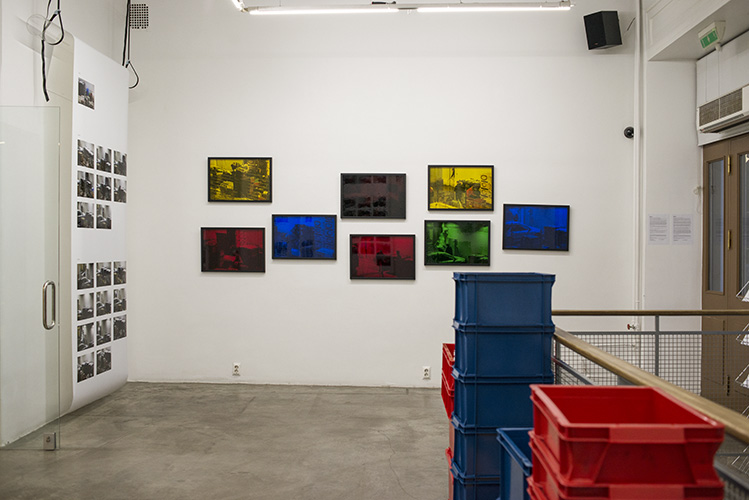
Liina Siib, Hidden People, Hobusepea Gallery, 2020
SBR: In one of your recent interviews (fkmagazine.lv), you mentioned that you are working on a short film about the Estonian artist Ants Laikmaa, who was active almost a hundred years ago. How did you come up with the idea for the film, and what is the progress so far?
LS: Yeah, I’m currently working on three projects: one is a script for an experimental film based on the Soviet film Amphibian Man that was based on the book of the same name by the Russian science-fiction author Alexander Belyaev, another is a photographic work called 2+2 that I started during the Covid pandemic period, and then there is a film about Ants Laikmaa (1866–1942). This spring we filmed with cinematographer Epp Kubu outside Estonia, in Capri, Naples, Sicily and Tunisia, where he lived and worked in 1911–1913, and now we are continuing filming at Laikmaa’s former studio school building in Tallinn, and in Haapsalu and Taebla, where his house and museum are.
In 2015, there was an exhibition of the works by Ants Laikmaa at the Kumu Art Museum in Tallinn, curated by Liis Pählapuu, where I worked as exhibition designer. Laikmaa is an important name in the Estonian art history. He was looking for adventures and happenings. Besides his iconic pastel paintings he established a studio school and helped to organise early art life in Estonia. Last year I was asked to make a short artists’ film about him, one artist exploring the other artist. This has involved a lot of research on his life, writings, works and his personal photo archive. I don’t want to call the film a biographical documentary, but rather an experimental film to rediscover the travels and meetings with people by an artist who lived a hundred years ago; there is no actor to depict Laikmaa, but there will be an exchange of dialogue between his thoughts, his works, and my thoughts from a contemporary context.

Liina Siib, Politics of Paradise, Tallinn Art Hall, 2019
SBR: Your 2019 photo installation Witches and the film Augusta or Politics of Paradise also represent forgotten cultural content. This, in turn, connects with the reconstruction of historical narratives. I wonder, however: how do you choose your subjects?
LS: I think when I choose a subject from the past, it somehow draws my attention from the point of view of the present. And somehow I relate it to my own experiences and what is happening in today’s society. Perhaps the subjects choose me.
I am curious to know more about and expose these topics and subjects that are not centrally exposed, or they are invisible or unnoticed, kind of marginal. I don’t know if you are familiar with the sociologist Avery Gordon’s concept of ‘social haunting’. She wrote about the phenomenon that when something has been in history and is still kind of there, and hasn’t been resolved or discussed or is neglected, then it tends to come back and manifests somehow, to the audience, as a ‘return of the repressed’. I’m very interested in this concept.

Liina Siib, Linda Vilde Museum, Eduard Vilde Museum, Tallinn Literary Centre, Estonia, 2021

Liina Siib, Linda Vilde Museum, Eduard Vilde Museum, Tallinn Literary Centre, Estonia, 2021
SBR: It seems to me that observation, sometimes journalistic, sometimes ethnographic observation, plays the main role in your work. Is it like observation works as an act of creation for you?
LS: Yes, it is, absolutely, observation works as an art practice or method. I want to keep myself open to observation, that is, not to be judgmental. On the other hand, I am judgmental when I edit my work to maintain my purpose and quality.
When I started working more with the camera, I had a Zenit camera at the time, I became aware of the power of observation. I never worked much in the studio or set things, I preferred to go out on the street, and was very interested in seeing how reality staged itself in front of my eyes. At the same time, I began to notice what the naked eye couldn’t see but the camera could. It can expose a fact very clearly. I used to photograph my mother, she was often my model. When she fell ill, I didn’t realise how serious it was in the beginning, and she died within a short time. So when I later looked at photos of her that I’d taken during the last year of her life, they told me the sad truth about her state that I disavowed to admit at the time. That was kind of Ronald Barthes punctum for me. I learned that observation by a photography artist combines two things: observation with the naked eye and with the lens of the camera.
I worked with analogue Nikon and Minolta cameras until 2010, and I am still using them, but that year I got my first digital SLR camera. In both formats, I always try to minimise the camera’s power by putting it in a way that the subject and the fluency of the surroundings won’t be disrupted. If you look at my video work Unsocial Hours, where women are sweating terribly while working in a pastry shop, my camera tries to capture the same thing as what it was like there. That’s how I use the camera to follow the subject, that it behaves sometimes like an anthropological observer, sometimes like a journalistic observer, which is something completely different to organised or staged filming.
SBR: I read a review of your work that referred to you as ‘the last Soviet generation’. How did the socio-political context of your growing-up affect the construction of your artistic self?
LS: My first art education took place in Estonia still under the occupation by the Soviet Union. When Estonia regained its independence in 1991, there was huge euphoria, everyone was excited that we were finally independent, that we had freedom of expression, and everyone was so eager to discover a new life, new things. But new things could not erase the past, Soviet ideology or oppression. All that had left marks. At that time I had only a vague ideas about Marxism, in 1980s we studied compulsory Marxism-Leninism at the Soviet art university, communism was taught as a ‘science’, it meant reading boring newspapers with dogmatic lies and never discussing anything.
Every Estonian family had repressed members, somebody deported and/or killed by Soviet authorities. This context created a depressed atmosphere with one things spoken at home and other things spoken or silenced in public sphere. Then as a photography MA student I went to London in 2002 to study in exchange at the Westminster University, and I realised that Marxism was popular there in the UK. I found there were three different Communist parties in Britain, that was explored in my film What Is To Be Done. I realised that even Stalinist ideas found admirers by some leftist people who lived outside the Soviet Union. Suddenly, a different context opened up to me, where history, visual imagery, art history and aesthetics emerged as subjects. I became more interested in social history. At the same time, there were big demonstrations in London against the war in Iraq. This was around 2002. I went to the rallies, took pictures, filmed and questions came to my mind like: Where do these people come from? How do they live? etc, rather than political aspects.
I have been thinking on the phrase ‘the last Soviet generation’ coined by Alexei Yurchak. This last generation was saturated with lies, doublespeak and propaganda. Some of these young people became somewhat individualistic, nihilistic and cynical. They didn’t want anything to do with politics etc. 30 years is a long time. People change and world changes. By now it means I have lived longer during the capitalist system. This has been time of comparing the both systems, socialist and capitalist, the ideologies etc. It has given me a lot of subjects for my art works.
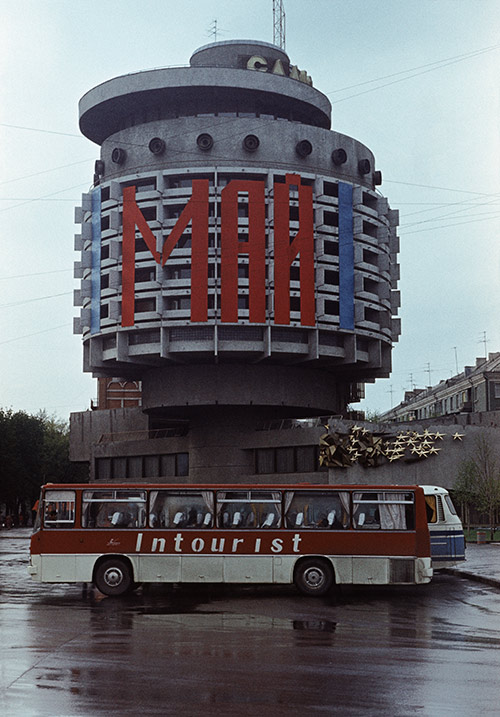
Liina Siib, Kyiv April 1986, 1986 / 2019
SBR: Now the Russian war is going on in Ukraine, and many artists in Ukraine and abroad are raising their voices in this context. What is your opinion of the war? Have you heard from artists who are currently in Ukraine?
LS: I always feel connected with Kyiv. When the Chernobyl catastrophe happened in 1986, I was on holiday in Kyiv with my mother. At the time I was an art student, and I took 2 rolls of photos there, which you have seen in my exhibition Politics of Paradise under the title Kyiv April, 1986. There is also a fictional movie poster Oblivion Bugs (2001) from Kyiv. I like Ukrainian films and follow the filmmakers, and I have a deep interest about the historical past of Ukraine, especially what happened in 1920s in Ukraine. I currently follow blogs, vlogs, newspaper articles, online platforms, and Instagram, where I follow some Ukrainian artists. I like their super strong sense of humour, braveness and it gives me a sense of how strong they are in their homeland, despite this imperialist, patriarchal Putinists war.
Of course, I am absolutely against this Russian war in Ukraine.
SBR: Let’s talk about the form. How do you select a form when you develop an idea or a thought to visualise? What goes through your mind first, the form or the thought? I am curious about your process of work.
LS: My recent process of work isn’t designed to achieve perfection, but is rather process based and free-flowing. Sometimes an image comes to me first, sometimes a story, sometimes both together, and then I start asking myself questions about what, how and why. So I write down all my ideas. I have lots of scrapbooks, lots of folders of visuals. Different places and situations are also triggers for new work, especially when there is a socio-historical or geo-political background.
I collect ideas and visuals from different sources, such as books, newspapers and various websites. For example I have been collecting images of people in power, dictators for years, because I am interested in how they express their power through images on online platforms, it is often mixed with kitsch. All sorts of stories connected to magic appeal to me as well. Sometimes I get ideas from friends’ storytelling, from folklore, from everyday encounters. I think imagery is my language, so I pick up ideas from such stories where I can visualise multilayered, intricate, paradoxical, contradictory, strange and ironic elements. Then I try to find a form, to develop the work spatially, where forms grow into new forms and counterforms.

Liina Siib, A Woman Takes Little Space, 2007–2021
SBR: In 2011 you participated at the 54th Venice Biennale with the photographic work A Woman Takes Little Space, and for which you worked for fourteen years, from 2007 to 2021. This, I would say, is your most famous project, both among critics and spectators. How did you come up with these five words? What were your thoughts and your urge for expression behind this project?
LS: It was a long journey to come up with these five words. When I was growing up in the Soviet era, we were told that a man and a woman were equal. But at home, when my mother came back from work, she started working for home. Another point is that my parents raised me in such a way that I didn’t have to think about whether I was a girl or a boy. And then, when Estonia became independent again, there were more visitors from the United States in the 1990s. At that time, I worked part-time at the Center for Contemporary Art in Tallinn. Once I was interviewed by two American women, and they asked me if I ever felt the inequality as a woman in Estonia during the Soviet period. I said, no, I didn’t experience that. No, I wasn’t lying when I said no. The norms were different. When I started reading texts that dealt with gender, I began to recognise my mother’s work at home, which Sylvia Federici calls ‘reproductive labour’. I realised that without knowledge, you also don’t have a vocabulary and phrases for discussion. This insight was very important to me.
Then came the second phase, when I taught courses at the Estonian Academy of Art as a guest lecturer. Our topic was the 21st-century worker and work, so we visited different factories in Tallinn with the students, and found that workplaces were different for men and for women. And then in 2006 I saw an online article A Woman Takes Little Space by two female sociologists from the University of Tartu as a response to a debate about Estonian men dying much earlier than women. They concluded that women took up less place and are used already as girls to be less demanding, to do less important and less paid work.
The third phase of my journey on this project was a survey of wages in the European Union in 2006. It showed that Estonia had the largest gender pay gap in Europe. There is still a large pay gap. I was intrigued by the title A Woman Takes Little Space and I wanted to see how much space women actually took, I tried to visualise it. It was photographic documentation of women at work, of women from different classes and positions, and their work at home, in the office or in the factory, and nothing was staged.
I took similar pictures of men as I did with women, in a similar framing. And I realised that when a woman was in a pictorial space, she was immediately absorbed somehow by the frame. She became part of the space, determined by it. But when a man was there, it was like a portrait, the background and the man were separate units, the man is the man, and the space is the space. And this is so interesting. I guess this is a structural thing, but I think that’s the way I see things, or we see things; it’s so strongly embedded in our brains!
SBR: Do you frame yourself with any ism, like ‘feminism’, ‘humanism’ or ‘posthumanism’, or some other label or segment? You have a photo and video work with the same title, A Room of One’s Own. I am just curious about the connection or reflection between your work and Virginia Woolf’s essay.
LS: I can somehow link myself with all these isms, but I can’t say I’m only one or the other. Or a third thing, somehow. Yeah, I think it’s to be a human, to be a person, to be a woman, it’s always there. I’m also interested in intersectionality, so that I look at the social conditions, the class issues, and all that matters, and the social background. I think if I take one issue, it means an activist approach. I can’t go only with a political agenda, but I am probably political. I think I’ve always wanted to not belong here nor there, but somewhere in between.
And you projected me rightly, Virginia Woolf is my hero. She’s an extremely important writer, the way she wrote is something that resonates in me, and her essay A Room of One’s Own I feel very much connected with. So when I was working on my project A Woman Takes Little Space, that essay was always at the back of my mind, and raised these questions, like, How are these women at home? What is the space for them at home? What is the space? How can they emancipate their space for themselves while fulfilling their role as caregiver?
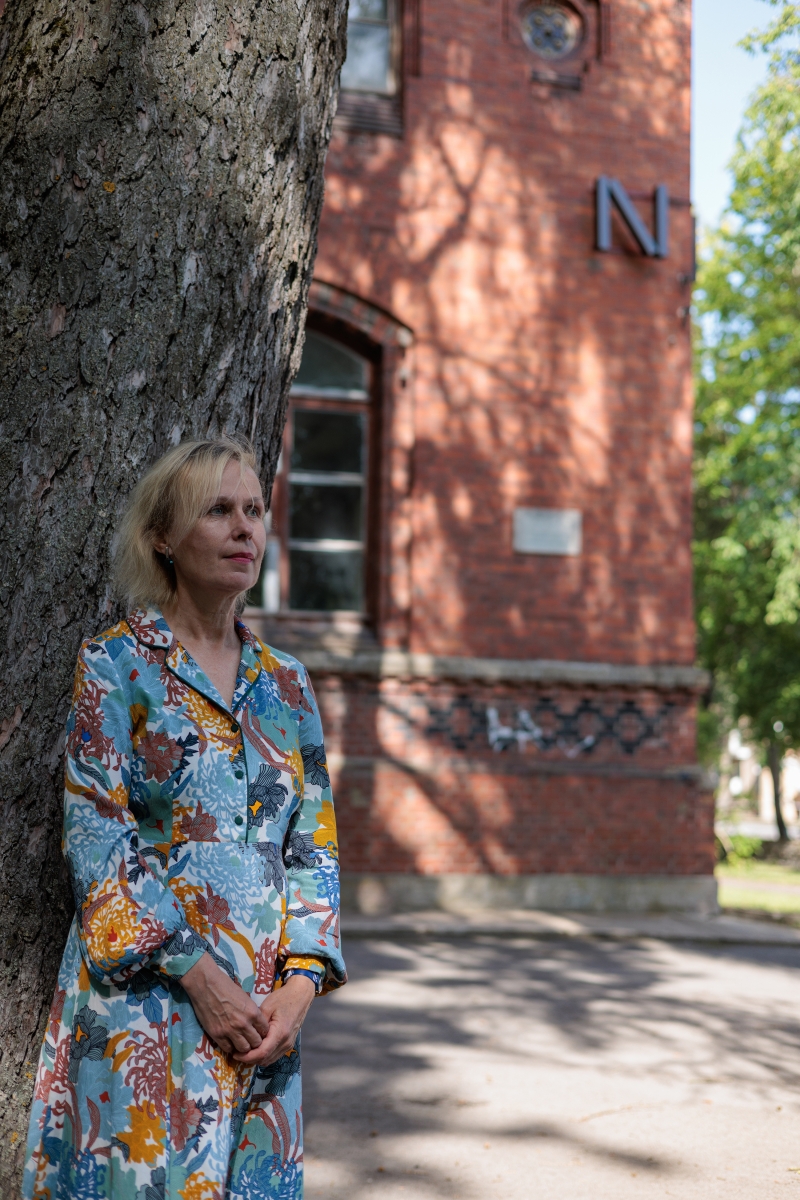
Liina Siib in Narva, August 2022. Photo by Liza Kuznetsova
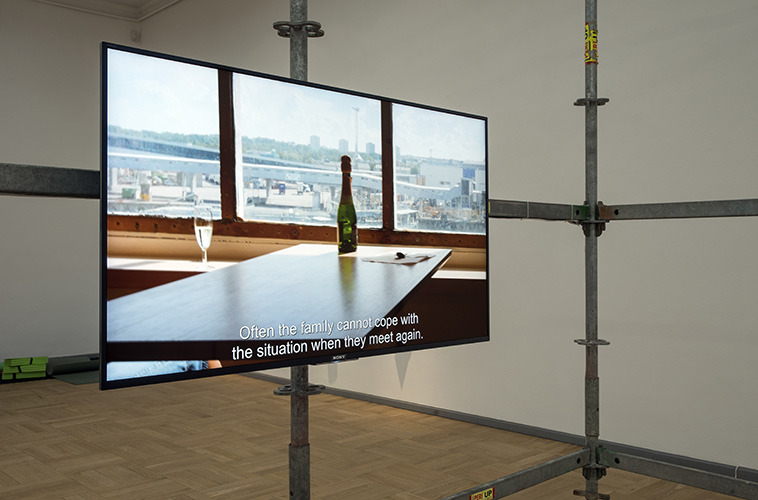
Liina Siib, Politics of Paradise, Tallinn Art Hall, 2019

Liina Siib, Politics of Paradise, Tallinn Art Hall, 2019

Liina Siib, Kyiv April 1986, 1986 / 2019

Liina Siib, Hypnosis, 1999




